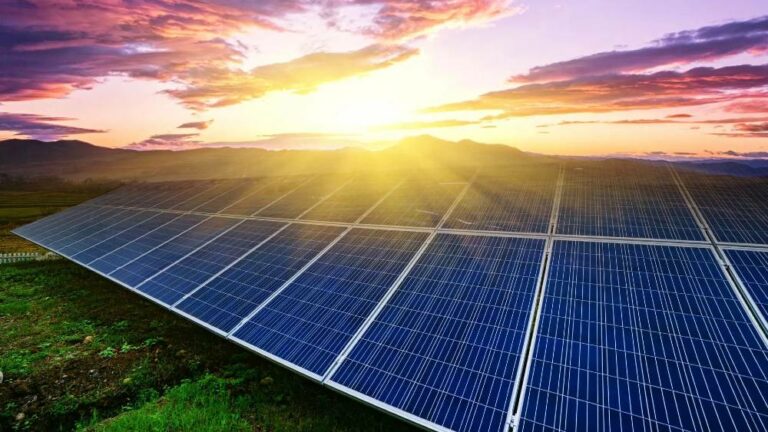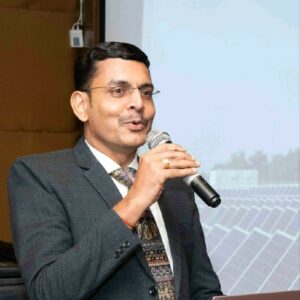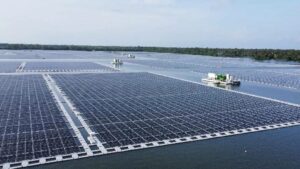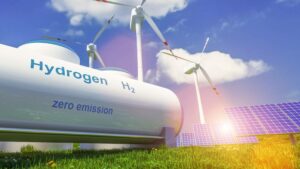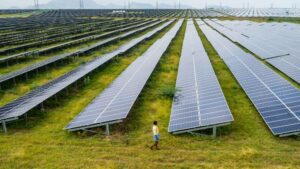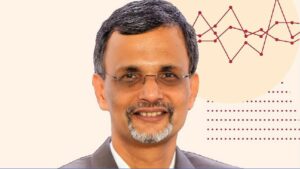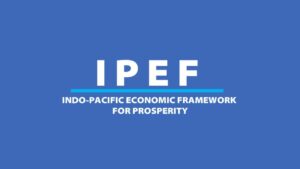Solar Energy Corporation of India Ltd. (SECI) has been accepting applications for incentives from solar manufacturers to set up gigawatt-scale manufacturing facilities for high-efficiency solar modules in India, under the second phase of the PLI Scheme. Manufacturers that set up any PV-related production facilities are eligible to apply for the incentives. However, they will need to develop facilities that make solar cells and modules in line with minimum manufacturing capacity requirements and minimum standards for performance.
The government, in its emerging solar manufacturing initiatives, has already extended PLI (Production link incentive) scheme to this sector. So now manufactures can opt to bid under any of the three categories of integration: poly-to-module, ingot-wafers-to-module, and cells and modules. This would be equally for polysilicon and wafers, along with cells and modules for solar industry.
Solar developers would be in a better position to control costs through PLI backward integration and pass on the benefits in the form of reduced pricing to solar panel buyers. Based on benefits of this scheme, large number of Solar Module manufacturers bid for PLI financial incentives to expand domestic manufacturing of solar panels. Sources seen participation from Reliance industries, Tata Power, JSW Energy, ReNew Energy, First Solar, Avada solar etc. among long list with other aspirants.
According to the PLI guidelines, the successful solar PV module manufacturer will be required to set up manufacturing capacities on GW scale for high efficiency solar PV modules. Such a move is designed to promote the manufacturing of high efficiency solar PV modules in India and reduce dependence in the area of renewable energy. SECI had invited online bids for the selection of solar PV module manufacturers who could bid under three baskets– Polysilicon-ingots-wafers-cells-modules (PWCM), ingots-wafers-cells-module (WCM), and cells-modules (CM).
The Indian government allocated Rs. 195 billion (US$ 2.4 billion) for this latest phase of the incentive. Out of the total allocated incentives for the scheme, the biggest part, worth Rs120 billion, was assigned to manufacturing polysilicon, wafers, solar cells, and modules or thin film plants. The second part, worth Rs 45 billion, involved the manufacturing of wafers, solar cells and modules. The last part, worth Rs 30 billion, only contained the manufacturing of solar cells and modules. The contract is for setting up 39.6 GW solar photovoltaic module manufacturing capacities under the second tranche of the PLI scheme of the government.
This would bring in a direct investment of around Rs 94,000 crore, directly employ about 1,95,000 and indirectly around 7,80,000 persons. It would save India close to Rs 1.37 trillion in imports, they estimated. So when fully implemented, this will be the biggest job booster for Indian economy.
Supply chain will become stronger with this much-awaited Cabinet approval of Rs 19,500 crore towards the solar PV module production-linked incentive scheme and it is likely to go a long way in developing the supply chain for solar PV module manufacturing in India. The PLI benefits coupled with State incentives under the industrial policies of the State government, concessional/ deferral duty schemes in customs, such as project import and manufacturing and other operations in bonded warehouse regulations, etc. would help in improving the IRR of the project and make Indian-manufactured solar PV modules competitive in the market.
India has committed, as part of its international climate commitments, to a target of installing 5,00,000 MW of electricity from non-fossil fuel-based sources by 2030 and this translates to 2,80,000 – 3,00,000 MW from solar electricity alone. “We would need nearly 30-35 GW (I GW = 1,000 MW) of modules. With these schemes we expect to have 70-80 GW of capacity which would take care of our domestic requirements as well as exports.
At the same time it is observed that PLI scheme on solar modules by central government would not protect and incentivise India’s solar panel market to the large. Only a small part of the value chain will be indigenised and India will still have to depend on imports from other countries. It will also not save industry from any supply side disruption with global political / economic factors. Till the time basic raw material i.e. silicon ingots and wafers are not largely manufactured in India, real domestic content manufacturing targets cannot be achieved.
As far as self-reliance is concerned, the solar value chain was slightly different compared to other sectors, the developers have the opinion. It was skewed towards the upstream, where a large proportion of the value was captured in silicon ingots. If we look at the value addition in every stage, the highest is where silica is converted into the ingot which is the biggest piece and main source of value. Unless we can tackle that, indigenisation of other parts of the value chain may yield minimal benefits.
Thus, India would continue to be dependent on China, even if it made solar cells or modules. Unless it tackles the source (ingot), it would not really move the needle, a developer said. PLI did not have any value addition or domestic content requirements. The imports would simply move from final products (cells and modules) upstream to wafers and ingots. By not insisting on domestic value addition as a normative metric, the PLI scheme does not force the indigenisation of raw materials.
Glass, aluminum frames, back sheets, EVA and silver paste will continue to be imported and the current account deficit may actually increase because of this, he added. So Government shall tightly follow-up with bidders, so they can setup desired capacities with exact timeline and make India self-reliant in silicon ingots to solar panels supply chain with pure domestic content manufacturing.




